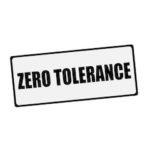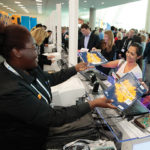 Looking for inspiration when it comes to fighting the good fight on behalf of the environment? One seemingly unlikely place to start is NPE2015, the International Plastics Showcase organized by SPI The Plastics Industry Trade Association.
Looking for inspiration when it comes to fighting the good fight on behalf of the environment? One seemingly unlikely place to start is NPE2015, the International Plastics Showcase organized by SPI The Plastics Industry Trade Association.
“Part of the problem we have with plastics is the misconception that it’s just this thing that goes into the landfill, never to be used again,” said Gene Sanders, SPI’s senior vice president of trade shows. To make the case that plastics are not the ultimate disposable, the trade association created a 10,000-square-foot Zero Waste Zone on its exhibit floor, where it showcased green practices, products made from recycled materials, and a wall where attendees could sign and post a pledge to pursue zero-waste manufacturing.
NPE2015 was held at Orlando’s Orange County Convention Center (OCCC) on March 23–27, where the triennial show drew 65,811 attendees and filled a 1.1-million-square-foot show floor — including, at the back of OCCC’s North Building, the Zero Waste Zone, which turned out to be enough of a draw that exhibitors who work in recycling and reclamation purchased another 10,000 to 15,000 square feet of secondary exhibit space around it. “In most trade shows, when you have a back-of-the-hall space, you think to yourself, Well, how do you have traffic back there? What’s the draw?” Sanders said. “People do restaurants. They do fun-and-games kinds of things. But we wanted to do something that was more relevant to our industry.”
SPI opened the exhibit hall with a fashion show — with all the clothes designed by students at Savannah College of Art and Design and made from recycled or reused materials. “They were made from everything from parachutes to bed matting to you name it,” Sanders said. “Up close, you could tell it was a student pinning things together, but they looked beautiful.”

The Zero Waste Zone also demonstrated the entire process through which plastic water bottles are recycled. “It involves an actual machine,” Sanders said. “It takes the water bottles and turns them into what’s called a PET [Polyethylene terephthalate] flake, which is what water bottles are originally made of. The PET flake looks like snow almost. It’s white and very fluffy. They actually use it for snow on movie sets and things like that. That was the idea — to show everybody what you could do and here’s how it’s done.”

Attendees could also browse displays of products made from recycled plastics, such as flooring made from computer circuit boards, computers themselves made from recyclables, and “a lot of toys,” Sanders said. “So, all kinds of things they can touch and feel to get the experience.”
Outside the zone, SPI recycled 452 of the 518 tons of waste produced at NPE2015, including 191 tons of scrap generated on the show floor. Response to such efforts in general and to the Zero Waste Zone in particular have been so positive that SPI next year is launching a new show dedicated to sustainability in the industry: Re|focus Summit and Expo. “This event is more about, how do we focus on the process of manufacturing in general?” Sanders said. “It’s about what’s innovative about how you’re going to be manufacturing these products and what you’re going to manufacture them out of, and how that can be more sustainable.”



